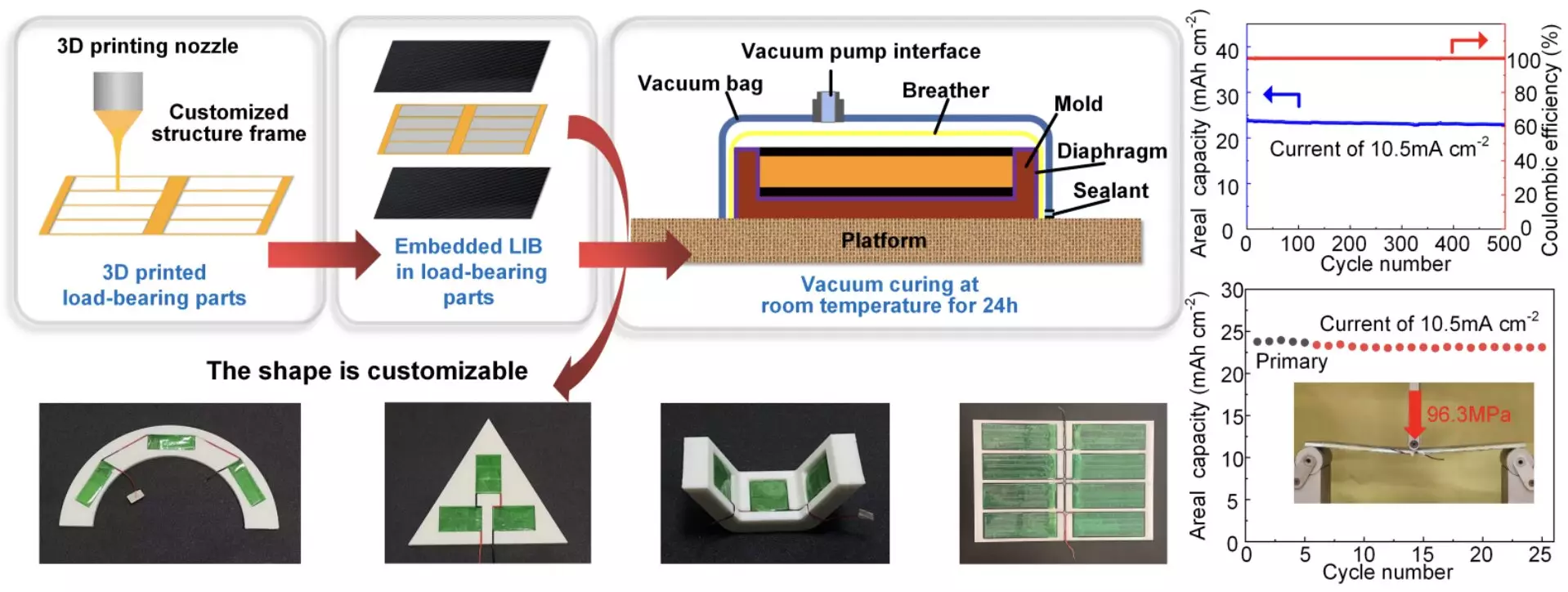The shift towards electric vehicles (EVs) presents a significant opportunity to reduce greenhouse gas emissions and dependence on fossil fuels. However, the successful and widespread adoption of EV technology heavily relies on innovations in energy storage solutions. Among these advancements, structural batteries— which integrate energy storage with a structural framework— emerge as a promising alternative. The development of such batteries can potentially enhance the efficiency and durability of electric vehicles while facilitating new applications in robotics and automated logistics.
Understanding Structural Batteries
Structural batteries represent a groundbreaking advancement in energy storage technology. They combine the functions of energy storage and mechanical support, allowing vehicles to carry fewer components while enhancing overall performance. Traditional battery systems are typically external entities within vehicles, improving efficiency while increasing weight and complexity. Structural batteries, however, can be embedded directly into the vehicle’s structural components, offering a dual function that could significantly optimize design and performance.
Recent research carried out by a team at Shanghai University has made strides in this area, focusing on the creation of structural lithium-ion batteries utilizing 3D printing. Yinhua Bao, the lead researcher, emphasizes the study’s aim: “to design an integrated energy storage and load-bearing structure with high load-bearing capacity and high energy storage.” This approach enables bespoke configurations tailored to different applications, enhancing the scope and compatibility of structural batteries.
One of the most critical aspects of the team’s research is their innovative use of 3D printing technology. This manufacturing process allows for precise designs and rapid production, making it possible to generate battery structures that can be customized according to specific requirements. By leveraging the capabilities of 3D printing, the researchers aim to fabricate components that exhibit high energy density and mechanical robustness. Bao states, “By designing a decoupled structure, it is possible to effectively reduce the deformation of the energy storage unit under load, thereby improving the mechanical stability of the battery.”
The strategic design enables the structural framework to bear the load, which minimizes stress on the energy storage materials. This leads to enhanced longevity and reliability, addressing the previous shortcomings observed in traditional structural batteries that often suffered from low energy density and limited mechanical performance.
To optimize their designs, Bao and his collaborators employed advanced finite element analysis (FEA) to simulate potential stresses and deformations within the battery structure. Through this process, they were able to visualize where the most significant damage could occur and adjust their designs accordingly. Precautionary measures, such as a distributed arrangement of battery cells, were incorporated to mitigate localized failures that could lead to complete system breakdowns.
The integration of FEA into the design process exemplifies how engineering principles can be applied to enhance performance characteristics in energy storage devices. This analytical approach facilitates a more robust structural design, ensuring that the batteries can withstand the rigors of real-world applications.
While a significant focus of this research addresses the needs of electric vehicles, the implications extend far beyond this single application. The adaptability of the structural batteries can make them suitable for a variety of uses, including autonomous robotics and automated material handling systems. As the demand for robotics grows in sectors such as logistics and manufacturing, integrating energy storage within their structural components could offer significant operational advantages.
For instance, in the case of drones or unmanned aerial vehicles (UAVs), lightweight and efficient energy storage solutions can dramatically enhance flight times and payload capacities. These innovations could pave the way for advancements in countless fields, from agriculture to disaster response.
The ongoing research into structural batteries presents exciting possibilities for the future of energy storage technology. As demonstrated by the findings from Shanghai University, the amalgamation of energy storage and mechanical stability is not only feasible but could also become a cornerstone of future vehicle design and robotics. The enhanced performance metrics, such as high energy density and mechanical resilience, suggest that we are on the brink of a significant leap in battery technology.
Looking forward, the team envisions extensive applications, including that of UAVs and various robotic systems. As researchers continue to refine these technologies, the pathway towards a sustainable, efficient, and innovative energy future becomes increasingly tangible. The integration of structural batteries could lead to a paradigm shift not just in the automotive industry but across multiple domains, redefining how we conceptualize energy storage in the era of electrification.

